The first day of Spring in Mexico
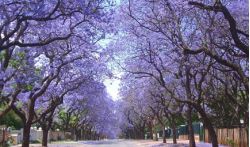
The Mexicans traditionally celebrate the vernal equinox in the Mayan civilization’s capital, the city of Chichen Itza, 120 km on east of the city of Merida in the Yucatan.
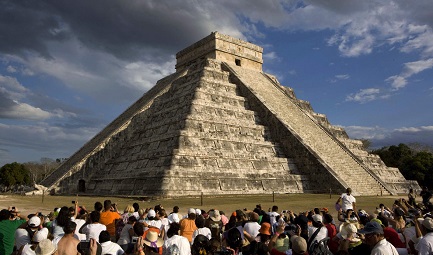
Long before the event this ancient Mayan city attracts tourists which are awaiting spectacular show: feathered serpent Quetzalcoatl descends to earth. The shadow of stepped edge of the pyramid of Cuculcan falls on one of the stairs, which is topped with a stone head of a snake, and it seems that the snake is crawling down the stairs, connected with the head upstairs. This lighting effect can be observed only twice a year. During the autumnal equinox the snake moves in the opposite direction. The researchers believe that if the southern staircase were preserved (currently it is destroyed), the effect would be observed at sunrise.
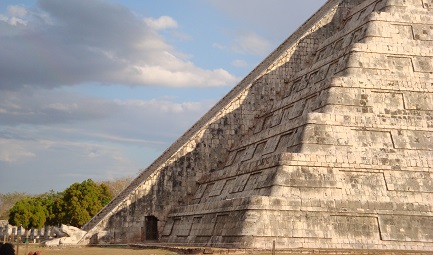
One can only suppose what it symbolized for the Mayas. Perhaps to those who observed this phenomenon, it seemed that sacred Feathered Serpent Cuculcan came back to life. Modern pilgrims argue that observing this unusual spectacle they have a spiritual enlightenment.
It's almost magical appearance of ancient deity as a signal of equinox shows that the ancient Mayas had a developed surveying and astronomy. If the pyramid has been turned on at least one degree away, the amazing play of light and shadow would never manifested!
During this event at Chichen Itza the theatrical performances and colorful ritual dances are arranged. Quetzalcoatl is the god of life and rebirth, so the thousands of people from Mexico and abroad come to Chichen Itza to receive a blessing and positive emotions.
Another place where the Mexicans meet the vernal equinox is Teotihuacan. On March 21 this ancient city meets a lot of people coming here to meet the spring and obtain the energy for the whole year.
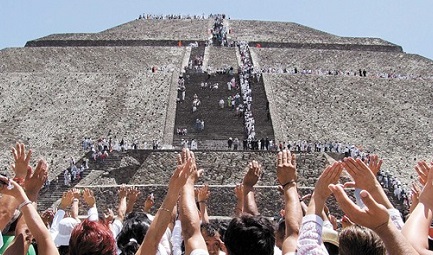
Thousands of people, mostly dressed in white clothes with red decorations, celebrate the day of the vernal equinox, gathering in front of the pyramids of the Sun and Moon. According to legends, to meet the spring on the top of the largest pyramid means to receive the blessing for the whole year.
At the foot of the giant structures the actors perform ritual dances, and the local shamans conduct the rituals of purification. About one million people pass through Teotihuacan per day.
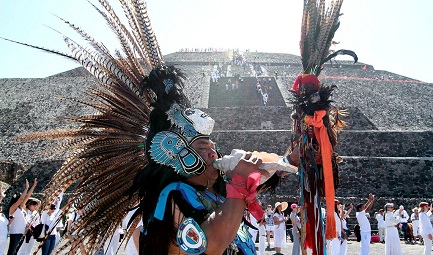
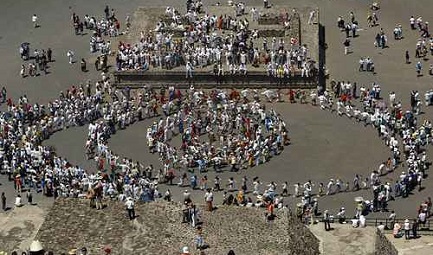
In the Palace of Quetzalpapalotl, which is one of the iconic buildings of Teotihuacan, you can observe a certain light effect on the vernal equinox too. Between 7:15 and 7:45 am, when the sun rises, the curved shadow of the teeth of eastern side of the yard crosses the angles of figures, curved in the same way and painted in red, on the west wall of the palace. The shadow moves from south to north, as if going down a few steps.
The images on the walls of the palace, on which the shadow projects, are combined with some rounds of mica like mirrors that, reflecting the sunlight, span it to the unlit part of the building. The resulting curved figure is xicalcoliuhqui, the type of ornament, whose evolution, as evidenced by scientists, is associated with the natural forms of snake. Thus, the light effects of both Teotihuacan and Chichen Itza represent the movement of shadow in form of snake, and both happen with high accuracy on equinox. Another interesting fact is that the palace at Teotihuacan was built before the pyramid in the Yucatan.
One of the places to meet the spring in Mexico is also an archeological zone Dzibilchaltun, which is 21 km from the city of Merida. All the buildings in complex are highly targeted and associated with the location of celestial bodies – the Venus, the Moon and the Sun. Here, on the vernal equinox you can also observe an amazing solar phenomenon: when the sun begins to rise in the east, its rays penetrate slowly into the "windows" and "doors" of so-called Temple of the Seven Dolls, and the sun itself at some moment appears right in the middle of the opposites doors of structure. The people, who come to Dzibilchaltun to meet the spring, call this phenomenon as an appearance of Astro-King. A similar phenomenon can be observed here on the autumnal equinox too.
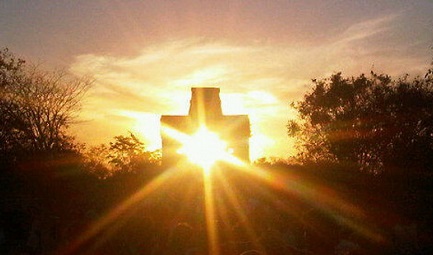
The residents of the capital of Mexico on the first day of spring gather in the main square of Mexico City, near the ruins of the Templo Mayor, once the most important building for the Aztecs. From the top of the temple the priest Tenoch once saw a sign promised by god Huitzilopochtli – an eagle pecking snake on a cactus nopal. From this place the city of Mexico-Tenochtitlan began. According to the beliefs, on the vernal equinox, at 12:00, when the sun is in the zenith, Huitzilopochtli sends to people the cosmic force. In the early hours of March 21 at the Templo Mayor you can see how the sun, passing along its route, sends its rays between the temples dedicated to Tlaloc and Huitzilopochtli, which were situated at the top of this majestic building.
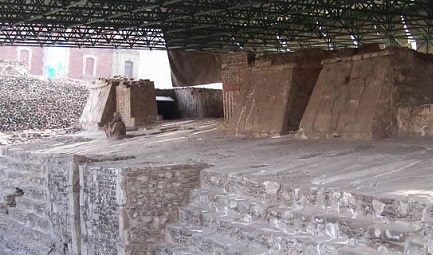
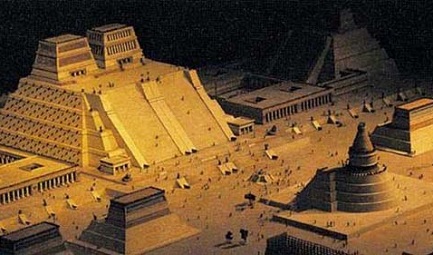
And finally, you can meet the vernal equinox in the ceremonial center of El Tajin, located in the state of Veracruz. It is believed that the city of Tajin was the capital of the Totonac’s empire and reached the peak of its development between 800 and 1150 AD.
Here you will not see the solar phenomena, but certainly feel the mystical atmosphere of the moment of spring receiving. In the ancient times the ceremonial center of El Tajin was available only for the rulers, priests, and the ball players. Observing the magnificent Pyramid of Niches, which with its more than 360 holes recalls to the solar calendar, the people who came here receive the rays of Astro-King, to the worship of whom the pyramid was erected.
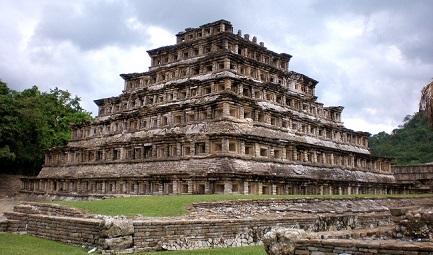
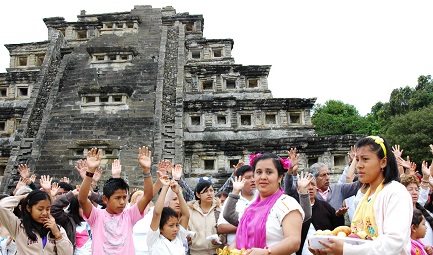
Actually it’s not so important, if you get in one of these places. You can meet the spring and new energy in any open place at sunrise putting the face and hands under the rays of the sun warming all the land.

In 2017, Guatemala, with other Central American countries (El Salvador, Honduras, Nicaragua and Costa Rica), celebrates 196 years of independence.

Vendimiya – in English, the word "vintage" is equal to this concept – is a harvesting of grapes intended for wine production. From of old the producers of wine were in awe of this moment, it was a celebration of their work. We invite you to become a part of such celebration!















